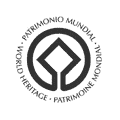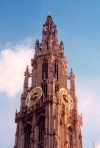 |
 |
UNESCO
World Heritage sites in Belgium |
The World Heritage Committee has inscribed
the following properties on the World Heritage List:
The
World Heritage List was established under terms of The Convention Concerning
the Protection of the World Cultural and Natural Heritage adopted in
November 1972 at the 17th General Conference of UNESCO.
The
Convention states that a World Heritage Committee "will establish, keep
up-to-date and publish" a World Heritage List of cultural and natural properties,
submitted by the States Parties and considered to be of outstanding universal
value.
One
of the main responsibilities of this Committee is to provide technical
co-operation under the World Heritage Fund for the safeguarding of World
Heritage properties to States Parties whose resources are insufficient.
States
Parties can request international assistance under the Fund for the preparation
of tentative lists and nomination forms, expert missions, training of specialized
staff, and supply of equipment when appropriate; they can also apply for
long-term loans and, in special cases, non-repayable grants. Requests must
concern work necessary for the preservation of cultural or natural sites
included in the World Heritage List or assistance to national or regional
training centres.
Emergency
assistance is also available under the Fund in the case of properties severely
damaged by specific natural or man-made disasters or threatened with imminent
destruction.
source: www.unesco.org




